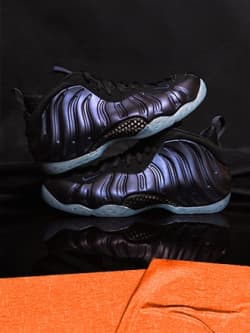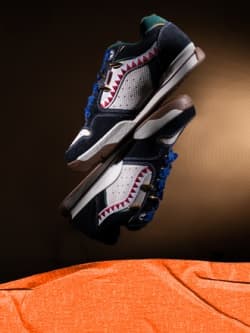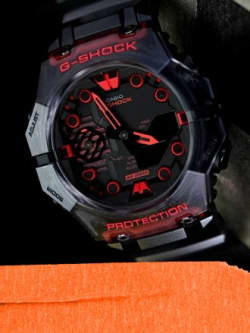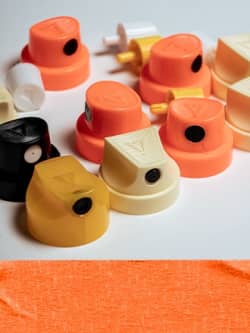#FactsFriday The Dassler Brothers: A tale of three stripes”¦

Cain and Abel. Romulus and Remus. adidas and Puma? Yes, the rivalry between two of the world’s most recognizable brands went far beyond sheer corporate competition. It was a nasty family feud that not only pitted two brothers against one another, but also separated the people of their hometown into opposing factions and it lasted 60 years!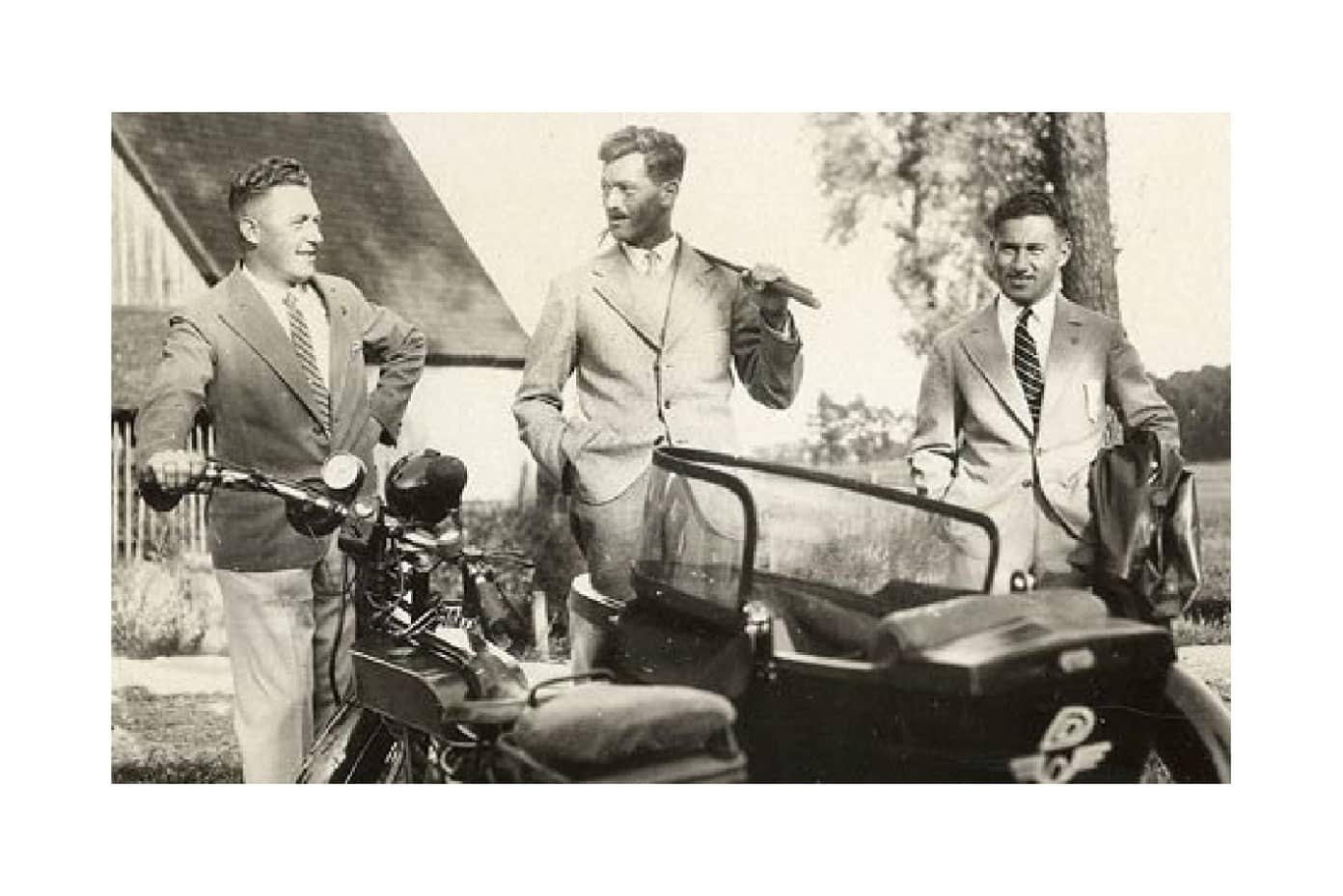
The Dassler Brothers with their Father
Here is the fascinating story behind two giants of the sportswear industry - Adidas and Puma…
Back in the 1920s, the brothers were partners in the Dassler Brothers Sports Shoe Company, operating out of their mother’s laundry room in the small German town of Herzogenaurach. Adolf (“Adi”) Dassler was a quiet, thoughtful creative craftsman who designed and made the shoes, complemented by his older brother Rudolph (“Rudi”) who was the natural salesman of the family. The brothers joined the war when Hitler seized power in 1933, it didn’t stop them from getting legendary African-American track star Jesse Owens to wear their shoes as he competed and won four gold medals in the 1936 Olympic Games. Owens’ victory gave the shoes international exposure, and sales of the Dasslers’ product exploded.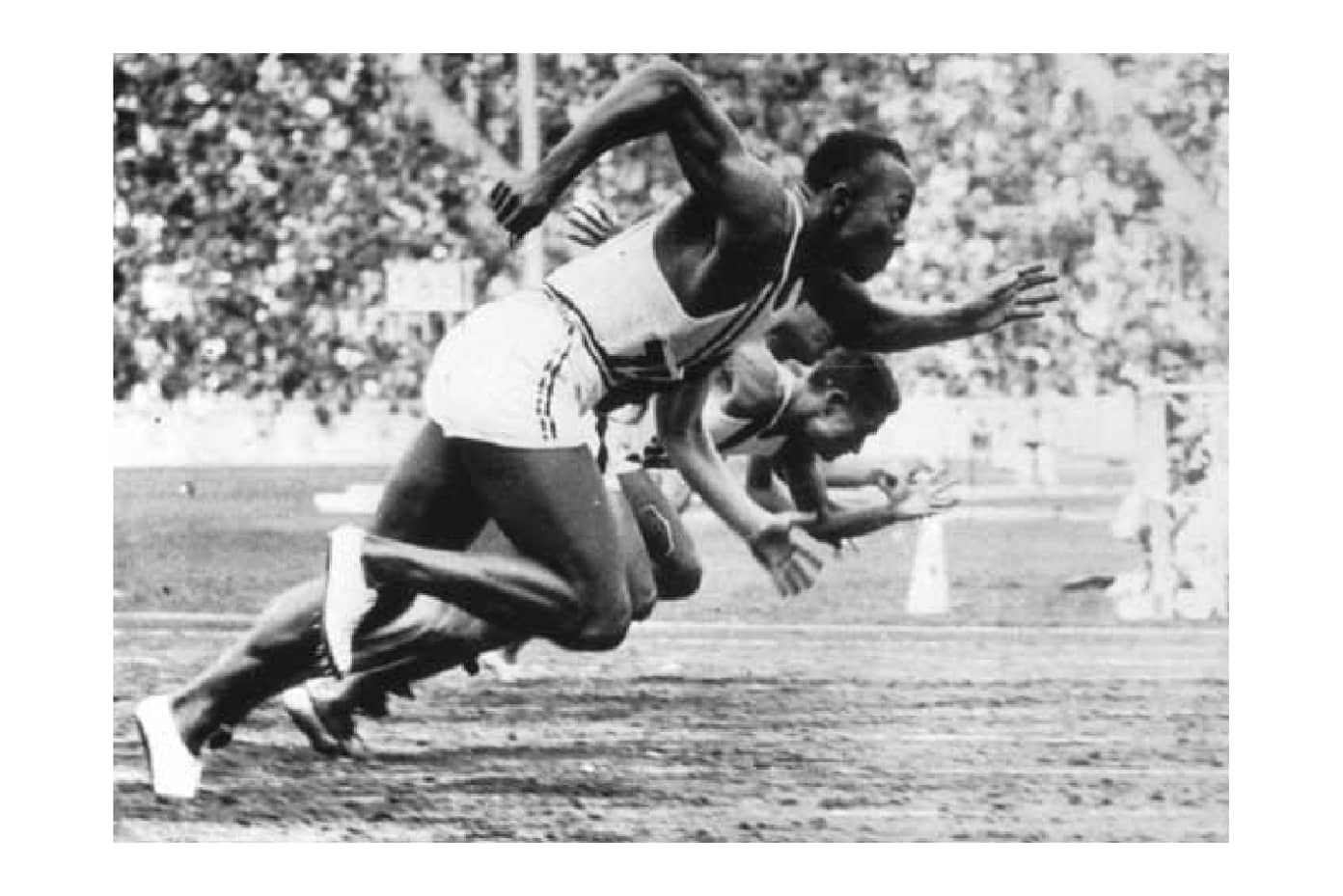
African-American track star Jesse Owens
But the success created new tensions in the brothers’ relationship, already tense by the fact that their families lived in the same villa despite their wives not getting along. There were several incidents that were said to have caused their conflict, but the most widely accepted one took place during World War II when the Allies were bombing Herzogenaurach. As Adi and his wife climbed into a bomb shelter already occupied by Rudi and his wife, he exclaimed, “The dirty bastards are back again,” referring to the Allied forces. Rudi was convinced the comment was directed at him and his family. And thus the feud — described as one of the most epic and well, quite Scriptural in business history — was born!
The Dassler Factory
When Rudi got called up for service, he suspected Adi and his wife had schemed to get him sent to the front so they could have him out of the way at work. Later, Rudi was arrested, first for deserting his post and then by the Allies on suspicion of working for the Gestapo. On both occasions, Rudi was convinced that Adi was the one selling him out. While Rudi suffered in a prisoner of war camp, Adi rebuilt the business, selling shoes to American GI’s.
The conflict however intensified as the brothers split the company in two in 1948, dividing the assets and the employees between themselves. Adi named his company “Adidas,” a combination of his first and last names. Rudi attempted the same by first naming his company “Ruda” but eventually changed it to the more athletic sounding “Puma.” The two built competing factories on opposite sides of the river Aurach and quickly became responsible for much of Herzogenaurach’s economy, with nearly everyone working for either one of the companies!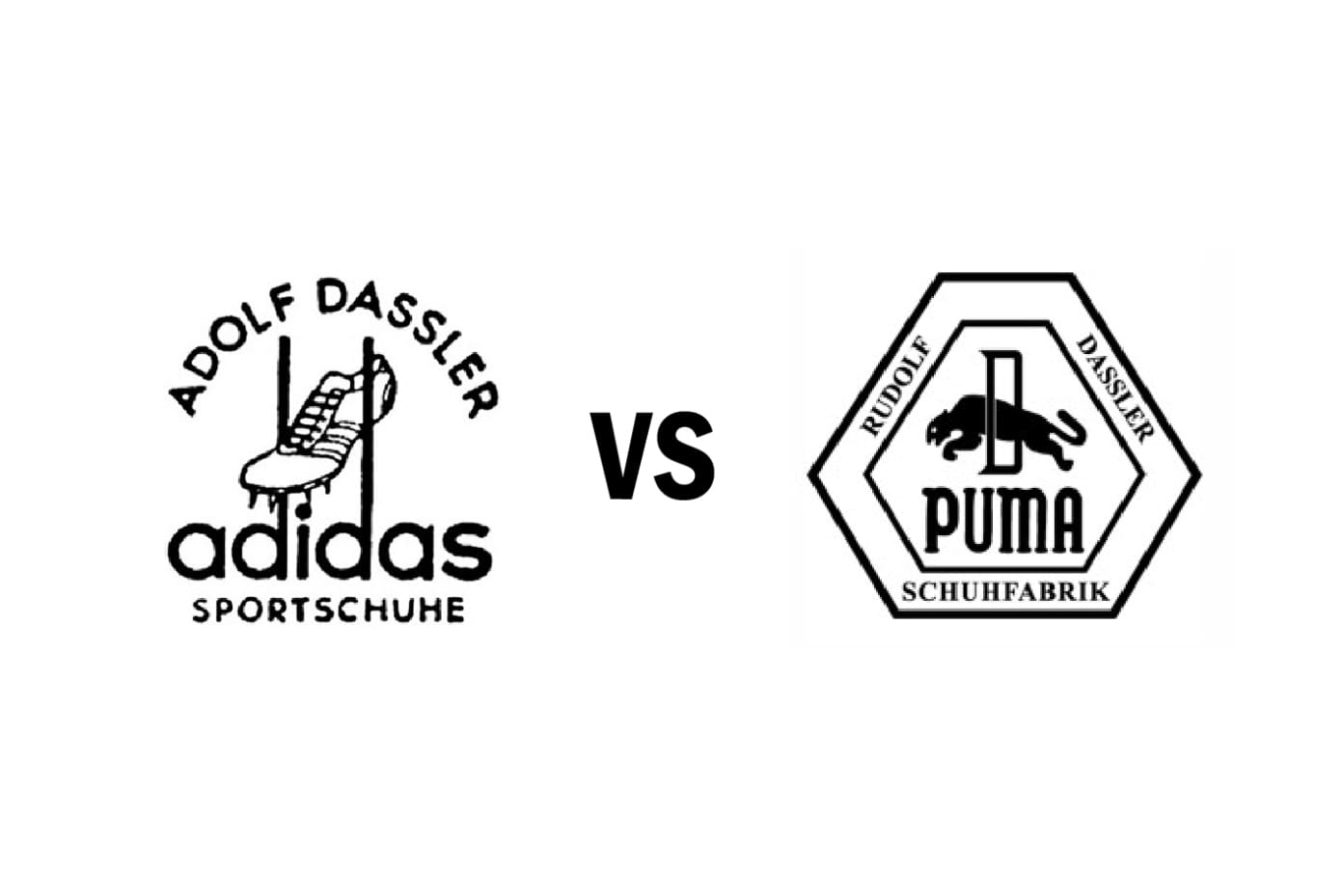
As the entire town got caught up in the Dassler family feud, the rivalry reached ridiculous proportions. There were local businesses that served only Adidas or only Puma people, interactions like dating across company lines were forbidden, and Herzogenaurach became known as “the town of bent necks” since people first looked at which company’s shoes you were wearing before deciding to talk to you!
While Rudi had the sales staff and was better at moving product, Adi had the technical know-how and better relationships with athletes who could provide exposure, tipping the scales in favour of Adidas, with Puma constantly playing catch-up. However, in focusing so heavily on each other, both the companies were slow to react to the threat of Nike NKE -0.30% , which would come to dominate the athletic footwear industry, leaving them far behind.
Where are they now?
Adidas and Puma are now both major corporations. But, in terms of the number of employees, Adidas is about three times bigger than Puma and is also the world’s leading football brand. Celebrity endorsements include David Beckham and tennis champion Andy Murray.
Puma, of course, has its own share of celebrity endorsements. Top athletes, such as the fastest man ever, Usain Bolt, wear Puma. Not quite as prominent in football as Adidas, Puma has a considerably greater presence in Formula One™, where it is the number one producer of driver-wear. Joint ventures with Ferrari and BMW have also led to the development of some of Puma’s best-selling shoes.
Adi and Rudi both died in the 1970s – predictably, they were buried at opposite ends of the town’s cemetery! And the Dassler family no longer has control of either company. But relations didn’t really improve between the two firms until 21st September 2009 when, to celebrate World Peace Day, they arranged a football match – not between Adidas and Puma, but between the bosses and workers of both factories. To prevent any dispute, both logos were on the football!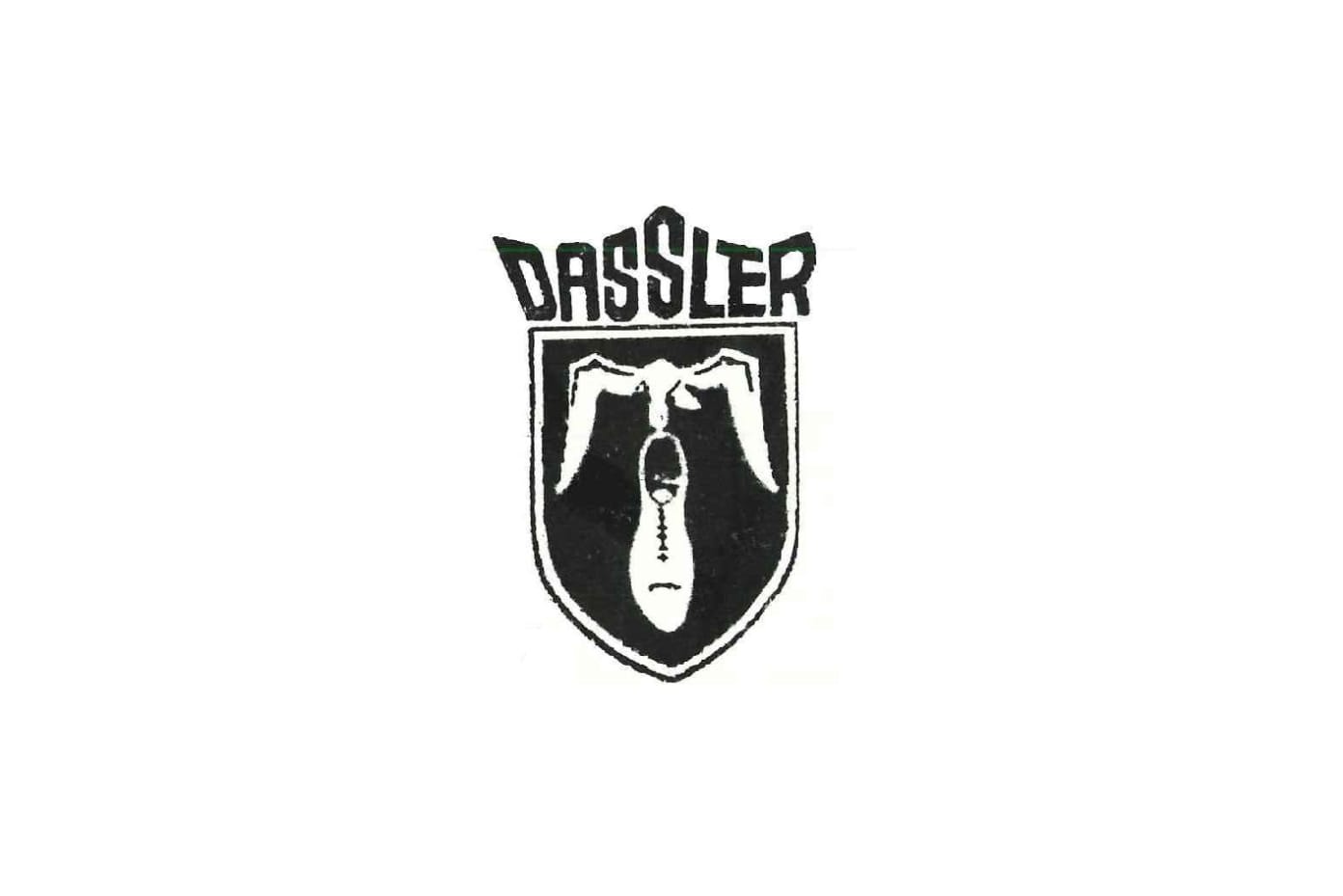
Dassler Brothers Sports Shoe Company Logo - 1924-1949​​
Puma Logo Timeline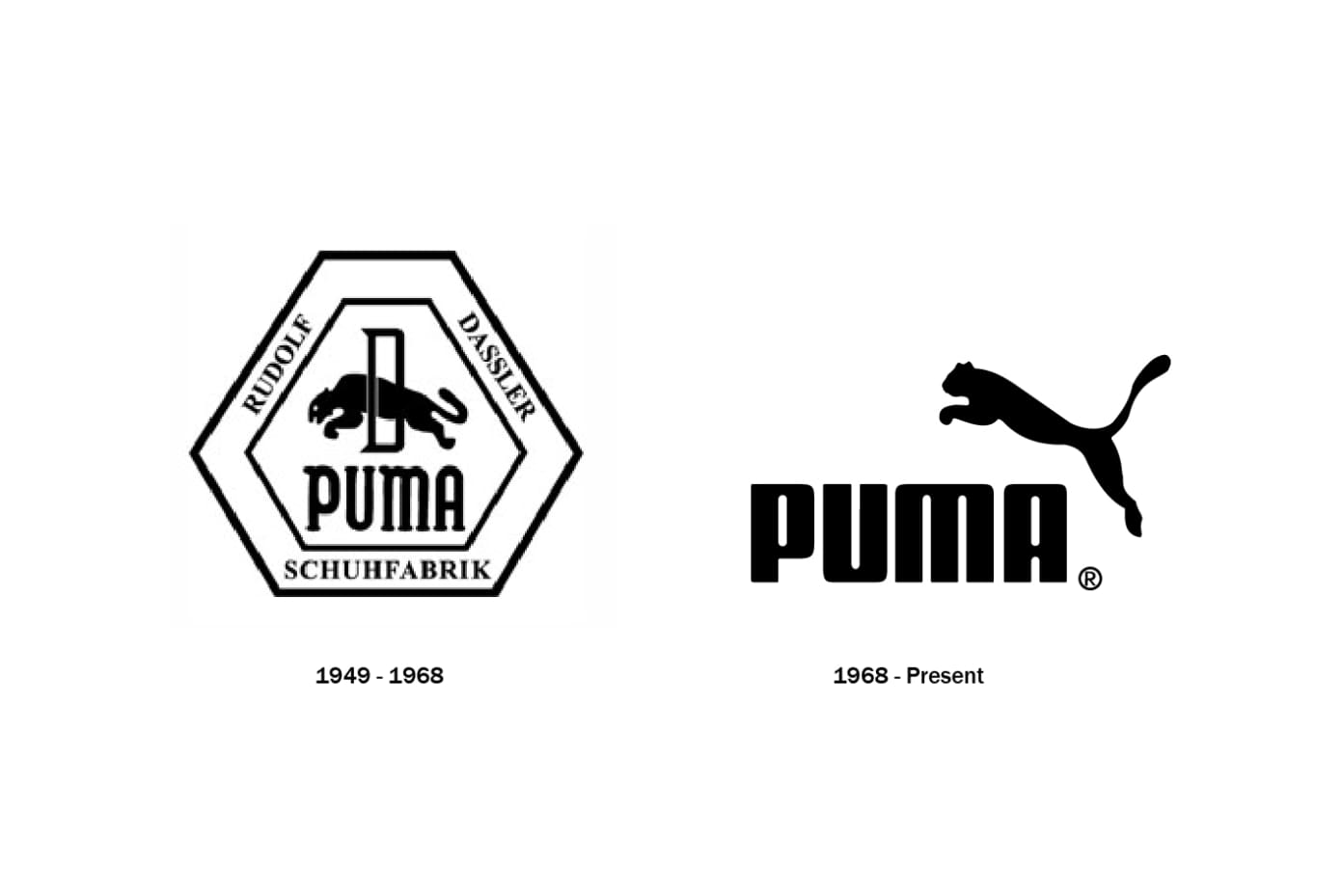
1949-1968 | The old logo with the words "Rudolf Dassler Schuhfabrik". Puma jumps by the letter D (the first letter of the name Dassler).
1968 - Present | The new and present Puma logo with a new font and new design animal.
adidas Logo Timeline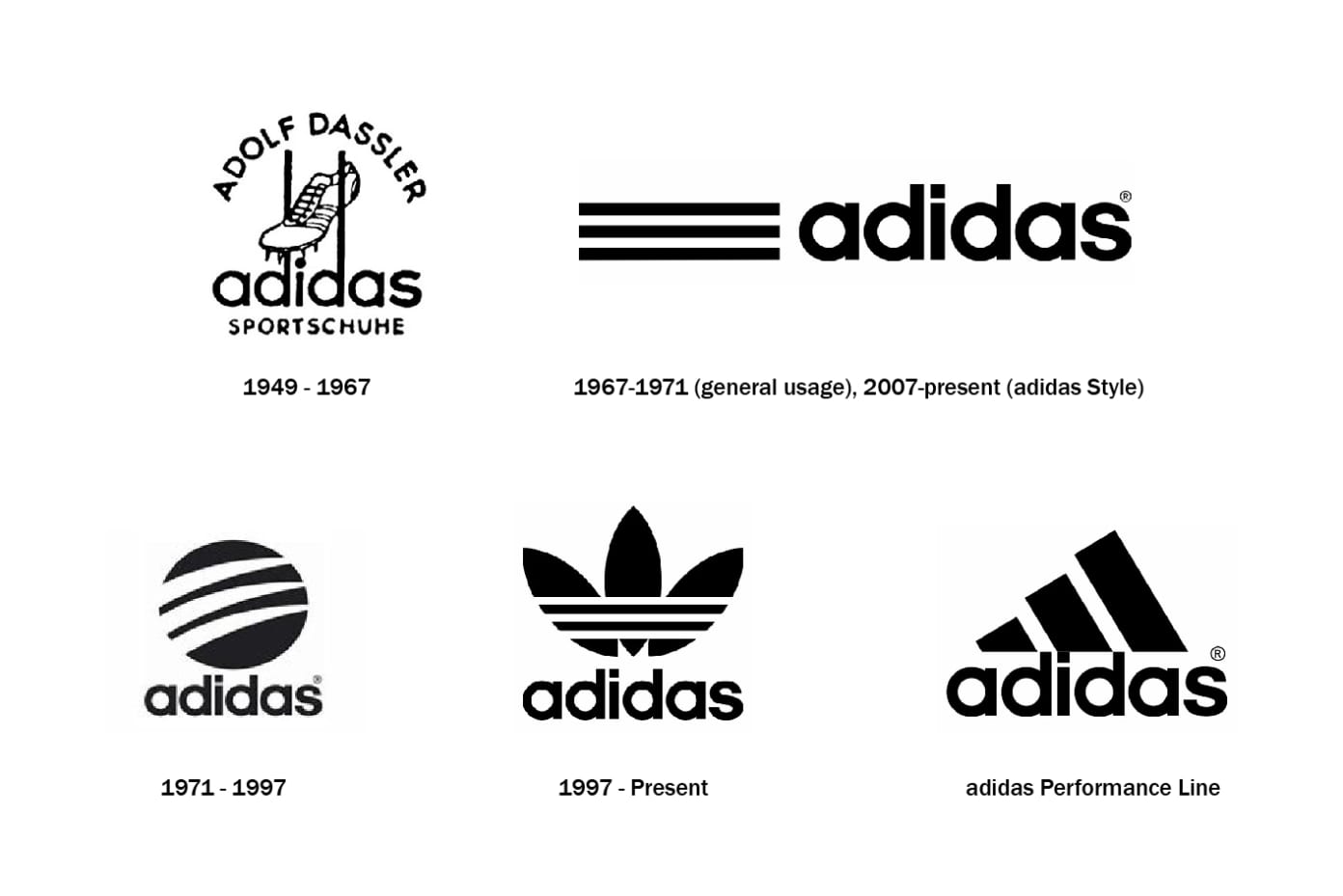
1949 - 1967 | In 1948, the company was split in two companies. Adolf renamed the former company as adidas
1967-present | Currently used as the "umbrella" logo for the adidas brand. 1967-1971 (general usage), 2007-present (adidas Style)
1971 - 1997 Currently used for the adidas Style line. 1971-1997 (general usage), 2007-present (adidas Originals)
1997 - present | Currently used for the adidas Originals line.


